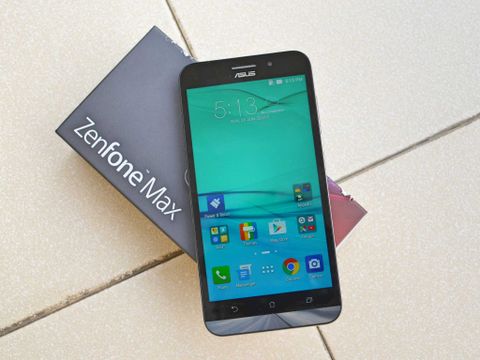The quick take
The maiden ASUS ZenFone Max launched last year was not perfect, but it was a standout performer in the affordable smartphone segment with its stellar battery life. The company recently launched a refresh with upgraded internals and identical design – just months after the first one went on sale. The highlight of the ZenFone Max – battery life — hasn't changed, and it's one area where it doesn't disappoint. In few others, however, it sadly does.
The Good
- Battery life
- Solid build quality
- Internal storage
The Bad
- ZenUI experience and bloatware
- No quick charging
- Weight

About this review
I used the Indian retail variant of the ASUS ZenFone Max that ran ZenUI on top of Android Marshmallow out of the box. There was about 25GB of free storage available after setting up the device. For most of the time, I used it with an Airtel 4G SIM in Delhi NCR.

ASUS ZenFone Max Design
The ZenFone Max is not much of a looker, and is identical to its predecessor — the original ZenFone Max — which went on sale just six months ago and follows the company's design ethos with signature concentric circles at the front and a metallic strip running along the sides with large bezels all around.
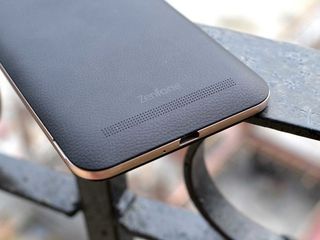
At 202 grams, the ZenFone Max is quite heavy and sports a noticeable width – a trade-off for packing in a massive 5000mAh battery. But it feels quite sturdy and is a solid device. With that heft and build quality, you actually can use the ZenFone Max to throw at someone in case of a street fight (or not). I'd like to point out that several big-battery phones in the market — like those from Lenovo and Gionee — are lighter than ZenFone Max.

The removable rear panel sports a faux-leather finish which gives the soft-touch plastic a nice feel and aids the grip. The gold metallic edges provide a stylish accent to the rear panel. There's nothing special about the design of ZenFone Max, and it is identical to most ZenFone devices. Yet it stands out in the herd and feels nice in the hand.
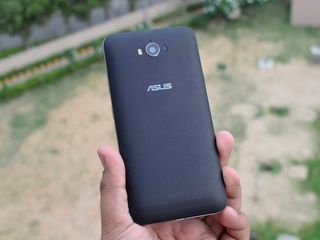
ASUS ZenFone Max Hardware
When it comes to internals, the latest ZenFone Max gets a significant upgrade by packing in octa-core Snapdragon 615 processor as compared to the Snapdragon 410 that powered the original ZenFone Max. This time around, the ZenFone Max comes in two variants with either 2GB or 3GB of RAM. Both variants include a generous 32GB of internal storage, expandable up to 64GB via microSD card.
| Category | Features |
|---|---|
| Operating System | Android Marshmallow 6.0.1 with ZenUI |
| Display | 5.5-inch HD (1280 x 720) with Gorilla Glass 4 protection |
| Processor | 1.5 GHz octa-core Qualcomm Snapdragon 615 |
| RAM | 2GB/3GB |
| Internal Storage | 32GB; expandable up to 64GB via a microSD slot |
| Rear Camera | 13MP |
| Front Camera | 5MP |
| Dimensions | 156 x 77.5 x 10.6 mm |
| Weight | 202 grams |
| Battery | 5000 mAh |

While overall the ZenFone Max is an able mid-ranger for your daily tasks, it tends to get bogged down with extensive multitasking or playing graphic-intensive games. Even with the Snapdragon 615 processor, the new Zenfone Max feels a bit underpowered and you would have hoped it was better. While I reviewed the 2GB variant, the 3GB variant would obviously fare better and makes more sense if you can spend the extra dough.
A fingerprint scanner is a noticeable omission on the ZenFone Max. While it is not a top priority for a lot of budget smartphone buyers at the moment, it is a blank spot on the specifications sheet when compared to several other budget and mid-range devices in the market right now.
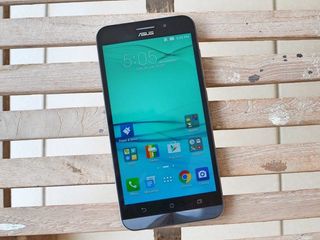
ASUS ZenFone Max Display
While several, sub-₹10,000 smartphones from Xiaomi, Lenovo, Meizu, et al sport full HD displays, the new ZenFone Max stays with 720p HD resolution on a 5.5-inch display. The sole positioning of the smartphone is its endurance and a 1080p display would've hit that metric.
The display on the ZenFone Max is not the sharpest, yet the brightness and color reproduction is impressive. The viewing angles too are great and the screen is not very reflective, and therefore the sunlight legibility is pretty good. From the display settings, you can also customize the screen colors or choose from a few presets to tune the display as per your preference. Tinkering with the settings, you can adjust the temperature, hue, and saturation.
Overall, the display on the ASUS ZenFone Max is good enough for your daily drive and there's also Gorilla Glass 4 for scratch and shatter resistance. While a 720p display is a tad underwhelming on a large display, a lot of users might be okay with the trade-off.
ASUS ZenFone Max Software
Thankfully, the ZenFone Max now runs Android Marshmallow out-of-the-box wrapped under Asus's proprietary skin, the ZenUI. The latter though isn't optimized well, and often things would freeze and there would be random lags when a few apps were in background.
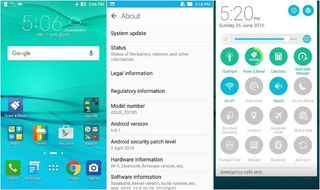
While Android skins are a matter of individual choice, the ZenUI is a tad gimmicky and much bloated. On first run, dive into the app drawer and you'd find a bunch of first party apps like ASUS Mobile Manager, ASUS Support, AudioWizard, Auto-start Manager, Do It Later, MiniMovie, PhotoCollage, Laser Ruler, MyASUS, Share Link, Splendid, Weather, WebStorage, ZenCircle, and ZenTalk. Also, you'd have all these apps and more updating on the first run which is a poor unboxing experience. There's also a bunch of third party apps like Clean Master, Dr. Safety, Amazon Kindle, Snapdeal, TripAdvisor, TrueCaller, Newshunt, and few others that are offered as suggested apps and are downloaded automatically as soon as you finish setting up the device.
The Asus Mobile Manager boosts and optimizes RAM and battery, but also includes shortcuts to several other optimization apps. Asus could've really packed in all that functionality in an integrated Mobile Manager app for better user experience.
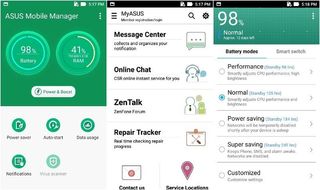
The ZenFone Max supports gestures and along with the double-tap to wake up or turn off the display, you can draw various letters on the screen to launch apps from standby. It's awkward though that there is no option to customize the gestures. You can flip the device over to mute a call and can also take a screenshot while using any app by shaking the phone. It's not the best implementation though, and several times I had to shake the phone violently – to the surprise of folks around me – to capture a screenshot making it a pointless 'shortcut'.
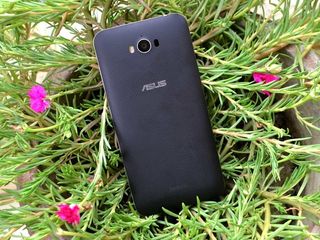
ASUS ZenFone Max Battery life
Of course, the highlight of the ZenFone Max is the 5000mAh battery it packs and the tremendous battery life it claims to offer. The claim's not misplaced and you can easily get through the second day on ZenFone Max with moderate usage. A casual user will be able to squeeze in more than two days by configuring the optimum battery mode. Asus offers multiple battery modes based on your usage — performance, normal, power saving, and super power saving. You can also create a customized one.
The ZenFone Max supports reverse charging, and can be used as a power bank to charge another phone using the bundled OTG cable.
Like the last time, one of the baffling issues with the ZenFone Max is the inefficient charging via the standard 1A/5V bundled charger. The ZenFone Max is notoriously slow to charge taking an average of five hours to charge the phone from zero to hundred percent. A quick charging solution would've been great especially when you have to charge a bigger battery like the one it has.

ASUS ZenFone Max Camera
When it comes to camera, the Asus ZenFone Max has a pretty much standard package on the specifications sheet. There's a 13-megapixel rear camera with PDAF support and laser focus, and a 5-megapixel front camera. However, the rear camera is only average as compared to budget smartphones from Xiaomi and LeEco which has set new benchmarks in imaging for the budget smartphone segment.
The ZenFone Max captures good details and the colors are accurate. Some landscape shots though lacked sharpness. While the camera focusses in a jiffy, the shutter speed is unimpressive. Interestingly, the ZenFone Max does pretty well in low light photography. For a budget device, using the Night or Low Light mode, I managed to click several decent pictures. The front camera too is good enough for your selfies and manages to capture enough details and accurate colors.
















The default camera app is loaded with options with several toggles right on the viewfinder. There are a variety of shooting modes like HDR, Super Resolution, Depth of Field, Low Light, Night, Slow Motion, Time Lapse, and Smart Remove and the settings include options to configure the ISO, white balance, exposure, and other features like Anti-Shake Enhancement.
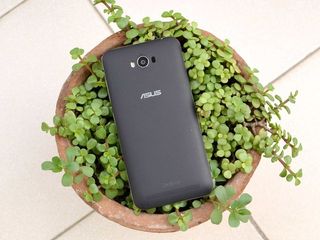
ASUS ZenFone Max Bottom line
ASUS has retained the best bits of the first ZenFone Max — the design and build quality as well as the camera — while upgrading the internals across the board. There are still some misses, like the lack of quick charging and fingerprint scanner. The hardware upgrade too doesn't up the performance as much as one would've liked thanks to the buggy ZenUI.
The ZenUI user experience on the ZenFone Max leaves a lot to be desired, and the amount of bloatware is plain annoying. One would wish that Asus would give ZenUI a refresh like Samsung recently did with TouchWiz.
Should you buy it? Probably
At ₹9,999 ($148) for the 2GB RAM variant in India, the Asus ZenFone Max is a good buy if you're looking for a decent smartphone that can last long and does good enough in performance and camera department wrapped in a solid chassis. The 3GB RAM variant, while being a better performer comes at a premium (₹12,999 ($192)) that might not be good enough for the neither-here-nor-there smartphone.
